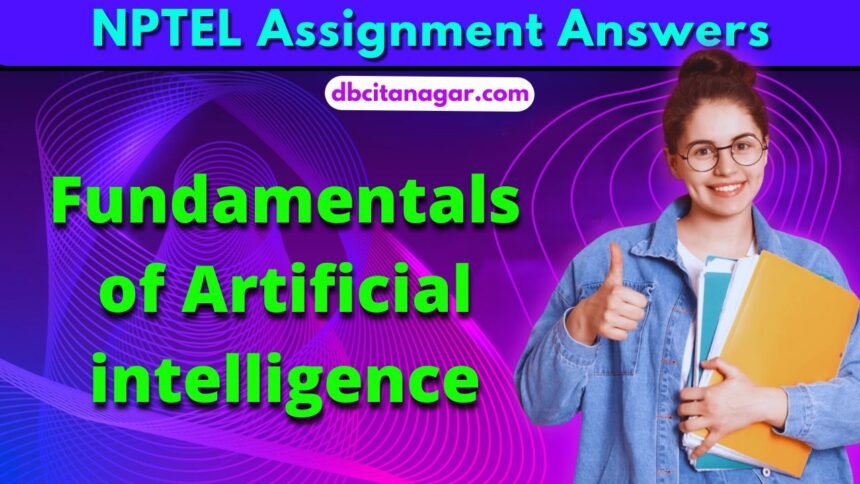NPTEL Fundamentals of Artificial intelligence Week 8 Assignment Answers 2024
1. Planning algorithms use descriptions in some formal language, usually first-order logic or a subset thereof. The first key idea behind planning is to “open up ” the representation of
A. States
B. Actions
C. Beliefs
D. Goals
Answer :- For Answers Click Here
2. Situation calculus is a dialect of First Order Logic. Which of the following statements hold for situation calculus?
A. Situations and actions are explicitly taken to be objects in the domain.
B. Only way to represent beliefs about a changing world.
C. Successor-state axiom specifies truth value of fluent in the next state as a function of the action and truth value in the current state.
D. All of the above.
Answer :- For Answers Click Here
3. STRIPS is an alternative representation to the pure situation calculus for planning. I. Actions are not represented explicitly as part of the world model. II. Actions are effectively instantaneous. III. Actions are thought of as operators that syntactically transform world models. Which of the above statements are correct?
A. Only Statements I and II
B. Statements I, II and III
C. Only Statements II and III
D. None.
Answer :-
4. ABSTRIPS greatly reduces search space, and is more efficient at solving large problems. It is a kind of ___________ planner.
A. State-space
B. Regular
C. Hierarchical
D. Advanced
Answer :- For Answers Click Here
5. GraphPlan is a two-phase algorithm: Planning Graph Construction followed by Solution Extraction. Which of the following does the first stage achieve?
A. Delimiting the search space.
B. Check if a solution can be extracted.
C. Some kind of reachability analysis on the given problem.
D. The graph is treated as a constraint satisfaction problem.
Answer :-
6. Assertion A: A conflict is called a mutex condition, which means that a pair of literal or pair of operators is mutually exclusive.
Reason R: For such a pair, both cannot be chosen simultaneously without leading to some kind of conflict.
A. Both A and R are true and R is the correct explanation for A
B. Both A and R are true but R is not the correct explanation for A
C. A is True but R is False
D. A is false but R is True
Answer :-
7. A plan graph is layered with a bunch of alternating layers of
i. _____________ and ii. __________.
A. i. propositions; ii. actions
B. i. actions; ii. situations
C. i. situations; ii. functions
D. i. functions; ii. states
Answer :- For Answers Click Here
8. Assertion A: Progression and regression planning cannot take advantage of problem decomposition.
Reason R: Progression and regression planning are totally ordered plan search forms.
A. Both A and R are true and R is the correct explanation for A.
B. Both A and R are true but R is not the correct explanation for A.
C. A is True but R is False.
D. A is false but R is True.
Answer :-
9. STRIPS make use of a stack that contains both subgoals and actions that have been proposed to satisfy those subgoals. It also relies on a database that describes the current situation, and a set of actions described by precondition, add and delete lists. The reasoning strategy used by STRIPS is ____________
A. Database Planning
B. Goal Stack Planning
C. List Planning
D. Subgoal Planning
Answer :-
10. For each layer, a mutex relation is defined that indicates which pairs satisfy the mutex condition. A pair, o, o’ ∈ Oi of operators is defined to be mutex if any of these conditions is met:
A. Inconsistent effects: An effect of o is the negated literal of an effect of o’.
B. Interference: An effect of o is the negated literal of a precondition of o’.
C. Trivial Operator: For each possible operator, o, a trivial operator is constructed for which, o’ is the only precondition and effect.
D. Competing needs: A pair of preconditions, one from each of o and o’, are mutex in layer L_i
Answer :- For Answers Click Here






